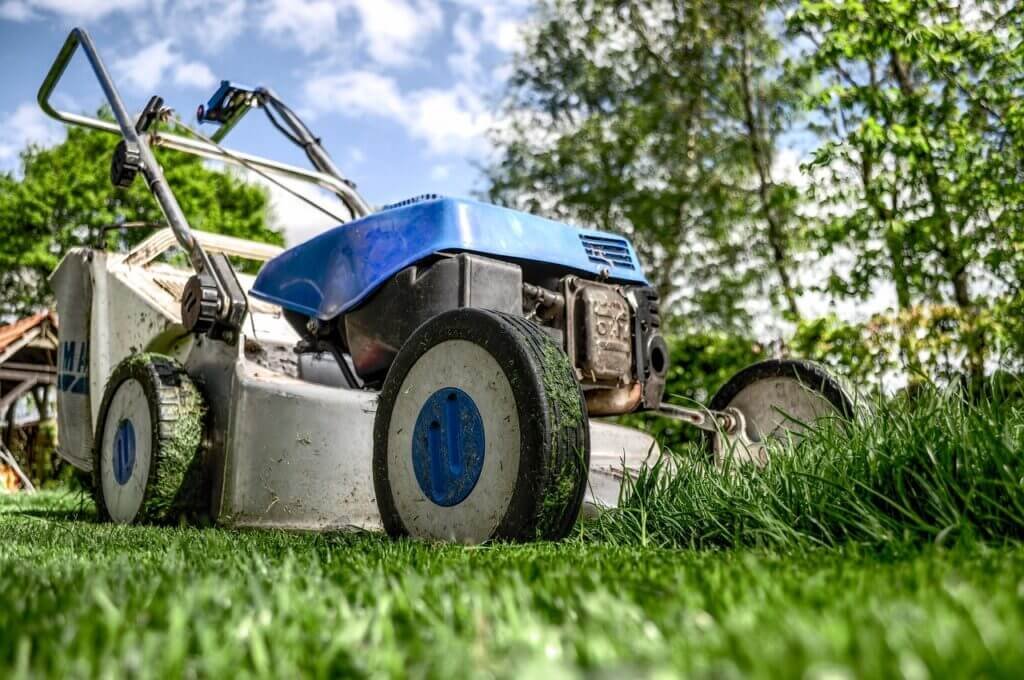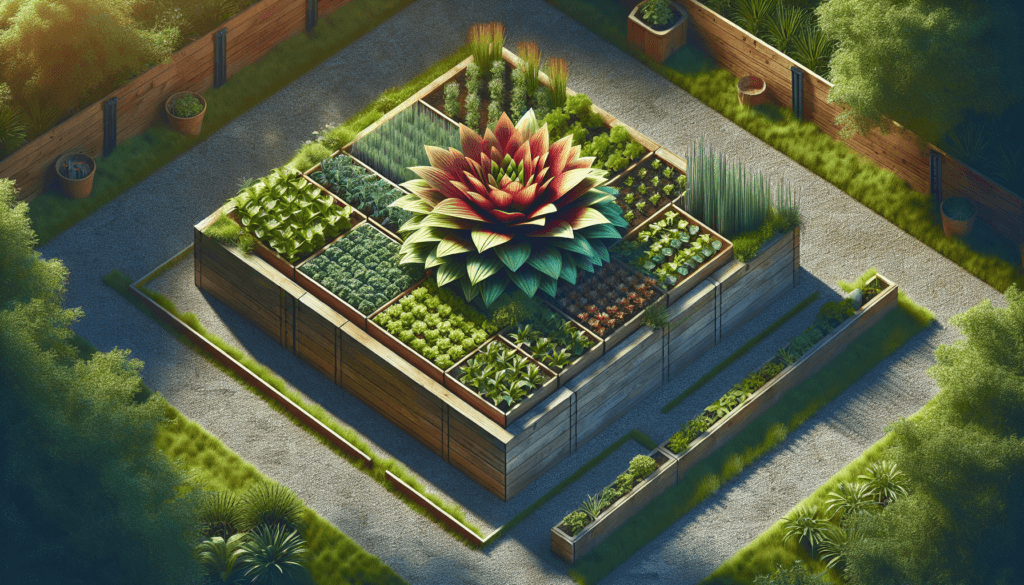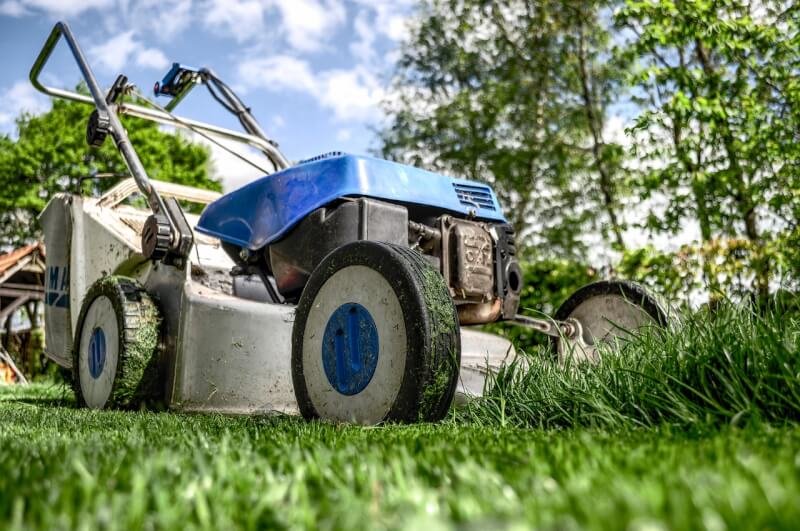You’ve always wanted to grow your own vegetables and herbs, but your limited backyard space has left you feeling discouraged. However, fear not! With a raised garden bed, you can transform even the smallest area into a thriving garden oasis. In this article, we will guide you through the simple steps to build your very own raised garden bed. From choosing the perfect location to selecting the right materials, we’ll provide you with all the tips and tricks you need to create a bountiful and beautiful garden that will have your neighbors green with envy. Get ready to roll up your sleeves and dig into the world of raised garden beds!

Materials Needed
To build a raised garden bed, here are the materials you will need:
Wood planks
Wood planks will serve as the main structure of your raised garden bed. Choose sturdy and untreated wood planks, such as cedar or redwood, that can withstand the outdoor elements.
Corner brackets
Corner brackets will help to strengthen the corners of your raised garden bed. Look for durable brackets that can securely hold the wood planks together.
Screws
Screws will be used to attach the wood planks and corner brackets. Make sure to choose screws that are appropriate for outdoor use and can securely hold the wood together.
Garden soil
High-quality garden soil is essential for the healthy growth of your plants. Look for nutrient-rich soil that is suitable for the types of plants you want to grow.
Compost
Compost is a valuable addition to your raised garden bed as it improves soil fertility and provides essential nutrients to your plants. You can either buy compost or create your own by composting kitchen scraps and yard waste.
Garden tools
You will need basic garden tools such as a shovel, rake, and gardening gloves to prepare the ground, fill the bed, plant, and maintain your raised garden bed.
Choosing the Right Location
When deciding where to place your raised garden bed, consider the following factors:
Sunlight requirements
Most vegetables and plants require at least six to eight hours of direct sunlight per day. Choose a location that receives ample sunlight to ensure the healthy growth of your plants.
Accessibility
Select a spot that is easily accessible for planting, weeding, and harvesting. A raised garden bed should be at a convenient height to avoid strain or discomfort while gardening.
Drainage
Ensure that the chosen location has proper drainage to prevent waterlogging. Avoid areas with standing water or compacted soil that can hinder plant growth.

Preparing the Ground
Before building your raised garden bed, it is important to prepare the ground properly. Follow these steps:
Clearing the area
Remove any grass, weeds, or debris from the chosen location to create a clean and clear space for your raised bed. Use a shovel or a garden hoe to uproot any unwanted vegetation.
Leveling the ground
Level the ground to achieve a flat surface. This will help ensure the stability of your raised garden bed and provide an even base for the frame.
Removing obstacles
If there are any rocks, large roots, or other obstacles in the ground, remove them to create a smooth and obstacle-free surface for your raised garden bed.
Building the Frame
Now that the ground is prepared, it’s time to build the frame of your raised garden bed. Follow these steps:
Measuring and marking
Measure and mark the desired dimensions of your raised garden bed on the ground using stakes and string. This will help you visualize the size and shape of the bed before construction.
Cutting the wood planks
Using a saw, cut the wood planks according to your measured dimensions. Remember to account for the height of the corner brackets when determining the length of the planks.
Assembling the frame
Fit the cut wood planks together to form the frame of your raised garden bed. Ensure that the corners are aligned properly and that the frame is sturdy and level.
Securing with corner brackets
Attach the corner brackets to secure the wood planks together. Use screws to fasten the brackets to the planks, ensuring a solid and stable frame.

Adding a Bottom Layer
To prevent weeds from growing and help with drainage, adding a bottom layer to your raised garden bed is crucial. Here’s what to do:
Weed barrier
Lay a weed barrier, such as landscape fabric or thick cardboard, on the bottom of your raised garden bed. This will prevent weed growth and protect your plants from invasive roots.
Cardboard or newspaper
On top of the weed barrier, add a layer of cardboard or several layers of newspaper. This will further suppress weed growth and create a barrier between the soil and the weed barrier.
Perforated plastic sheet
To improve drainage, you can add a perforated plastic sheet on top of the cardboard or newspaper layer. This will allow excess water to drain out while still preventing weed growth.
Filling the Bed
Now that the foundation of your raised garden bed is ready, it’s time to fill it with soil and compost. Follow these steps:
Mixing soil and compost
In a wheelbarrow or a large container, mix your garden soil and compost thoroughly. Aim for a well-blended mixture that will provide the necessary nutrients for your plants.
Calculating soil quantity
Determine the amount of soil mixture you will need by calculating the volume of your raised garden bed. Multiply the length, width, and height of the bed to get the total volume in cubic feet or meters.
Layering soil and compost
Start filling your raised garden bed with the soil and compost mixture, layer by layer. Add a few inches of soil, level it, and then repeat until the bed is fully filled. Make sure to leave some space at the top for watering.
Watering and settling
After filling the bed, water it thoroughly to help the soil settle and eliminate any air pockets. Allow the water to seep through the layers and ensure that the soil is evenly moist throughout.

Planting in the Bed
With your raised garden bed filled and ready, it’s time to start planting. Here’s what you need to do:
Choosing plants
Select plants that are suitable for your climate and gardening goals. Consider factors such as sunlight requirements, water needs, and the size and spacing of the plants when choosing what to grow.
Spacing and arrangement
Follow the spacing recommendations for each plant to ensure adequate growth and airflow. Arrange taller plants at the back or center of the bed, with smaller plants towards the front or edges for easier access.
Transplanting
Carefully transplant your seedlings or young plants into the raised garden bed, ensuring that each plant is properly spaced and planted at the correct depth. Handle them gently to prevent damage to the roots.
Mulching
Apply a layer of organic mulch, such as straw or wood chips, around the base of your plants. Mulching helps retain moisture, suppresses weed growth, and regulates soil temperature.
Maintaining the Raised Bed
To keep your raised garden bed in optimal condition and promote healthy plant growth, regular maintenance is required. Here’s how to maintain your raised bed:
Watering schedule
Establish a regular watering schedule based on the water needs of your plants. Keep the soil consistently moist, but avoid overwatering, as this can lead to root rot and other moisture-related issues.
Fertilizing
Periodically feed your plants with organic fertilizers to replenish nutrients in the soil. Follow the instructions on the fertilizer package and avoid over-fertilizing, as it can harm plants.
Weeding
Regularly inspect your raised garden bed for weeds and promptly remove them to prevent competition for nutrients and water. Mulching helps in suppressing weed growth, but occasional hand weeding may still be necessary.
Pest control
Monitor your plants for any signs of pests or diseases. Take preventive measures such as using insect-repelling plants or natural pest control methods to protect your plants from damage.

Extending the Bed’s Lifespan
To ensure the longevity of your raised garden bed, it’s important to take steps to prolong its lifespan. Here’s what you can do:
Applying protective finish
Apply a protective finish, such as an eco-friendly wood sealant or paint, to the exterior of your raised garden bed. This will help protect the wood from moisture, sunlight, and other elements.
Replacing deteriorated parts
Over time, the wood planks or corner brackets may deteriorate due to weathering. Regularly inspect your raised garden bed and replace any worn-out or damaged components to maintain its structural integrity.
Crop rotation
Practice crop rotation by changing the plants grown in your raised garden bed each season. This helps prevent the buildup of pests and diseases and maximizes soil fertility.
Benefits of Raised Garden Beds
There are several benefits to using raised garden beds for your gardening endeavors. Here are some advantages:
Improved drainage
Raised garden beds provide excellent drainage, preventing waterlogged or compacted soil. This ensures that your plants’ roots have sufficient oxygen and reduces the risk of root rot.
Better control of soil quality
With raised garden beds, you have full control over the soil composition, allowing you to create an optimal environment for your plants. You can amend the soil with compost and other organic matter to improve its fertility.
Reduced weed growth
The weed barrier and mulch used in raised garden beds significantly reduce weed growth, saving you time and effort in weed control. This allows your plants to thrive without the competition for nutrients and water.
Easier access and maintenance
Raised garden beds are designed at a height that minimizes bending and kneeling, making gardening more comfortable and accessible. The compact size of the bed also simplifies maintenance tasks such as watering, fertilizing, and harvesting.
By following these steps and taking care of your raised garden bed, you can create a thriving garden that provides you with fresh produce and a beautiful outdoor space to enjoy. Happy gardening!


